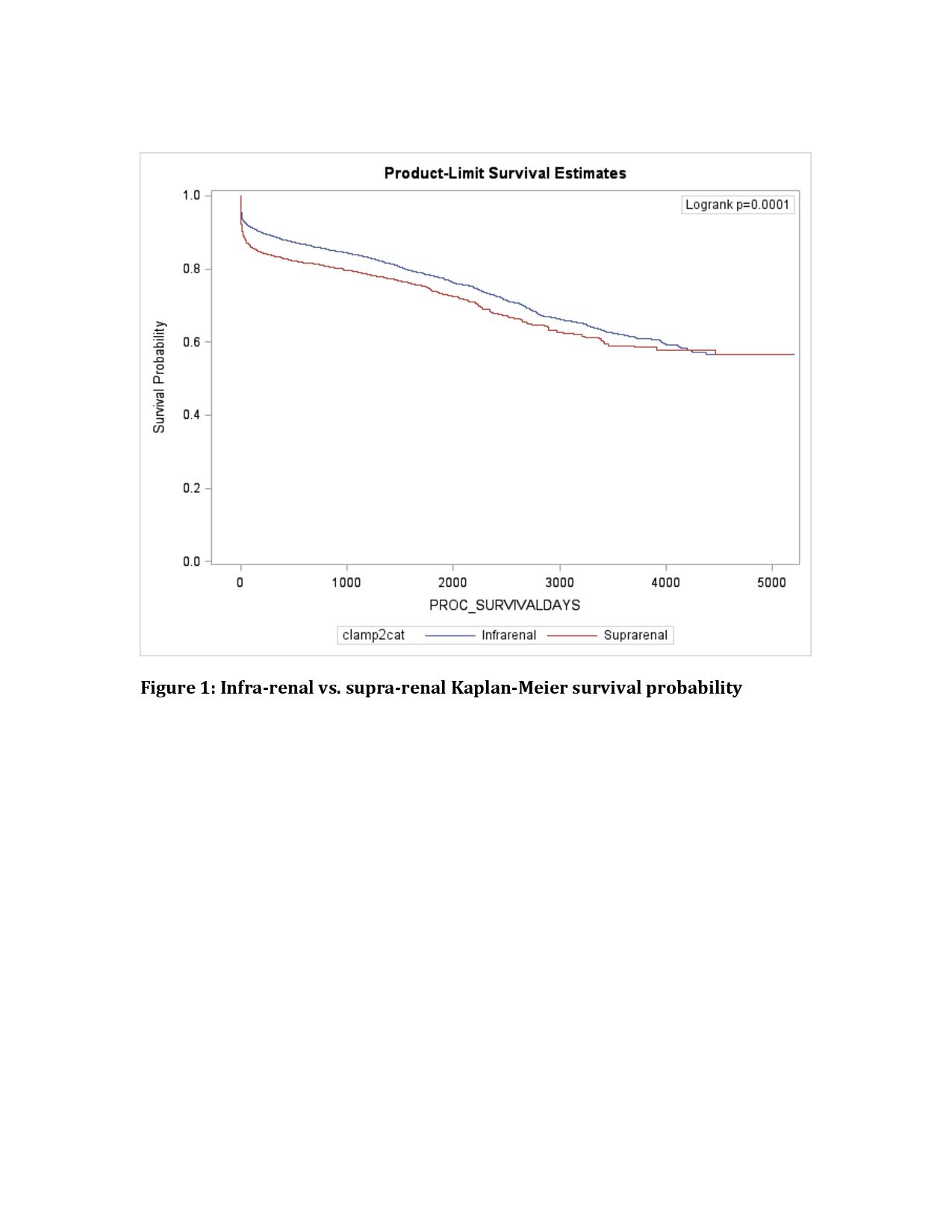Location of the Proximal Aortic Cross Clamp Does Not Affect Survival in Patients Undergoing Open Abdominal Aortic Aneurysm Repair
Marta S. Vismer, M.D., Khalil Qato, M.D., Allan M. Conway, M.D., Laurie Moudry, Guillaume Stoffels, Gary Giangola, M.D., Alfio Carroccio, M.D..
Lenox Hill Hospital, New York, NY, USA.
Objectives: Open abdominal aortic aneurysm (oAAA) repair in the era of advanced endovascular aortic techniques is utilized in challenging anatomy. The optimal location of the proximal aortic cross-clamp (suprarenal [SR] vs. infrarenal [IR]) remains controversial. The aim of this study was to analyze the effect of proximal aortic cross-clamp location on survival following oAAA repair in a contemporary series.
Methods: Patients undergoing oAAA repair from 2003-2017 as reported in the Vascular Quality Initiative registry were analyzed based on the location of the proximal aortic cross-clamp. The association of cross-clamp location with 30-day and long-term survival was assessed using univariate and multivariate analyses.
Results: oAAA repair was performed in 6,001 patients. IR clamping was utilized in 3,513 (58.5%) and SR in 2,488 (41.5%) patients. The IR group was younger (69.5 vs. 70.9 years old, p<0.0001), with less hypertension (81.3% vs 84.5% p=0.002), lower pre-operative creatinine (1.00 vs. 1.07, p=0.0003) and less prior aortic surgery (6.5% vs. 12.1%, p<0.0001). At 30 days overall mortality was 9.2%, with 7.1% mortality in the IR vs. 10.9 % in the SR group (p<0.0001). Variables associated with 30-day mortality included patient age (p<0.0001), female gender (p=0.04), history of COPD (p=0.0348), ejection fraction (p=0.01), ASA classification (p<0.0001), prior aortic surgery (p=0.0028), no preoperative statin (p=0.0115), and renal insufficiency (p<0.0001). Proximal cross-clamp location was not significant on multivariate analysis (p=0.2117). Perioperative complications included myocardial infarction in 442 (7.4%) and deterioration of renal function in 1,369 (20.6%) patients. Median length of stay was seven days. Mean follow up was 53 months (range 0-173). Multivariate analysis revealed the proximal aortic cross-clamp location had no effect on long-term survival (p=0.10). Variables associated with long-term survival included patientís age (p<0.0001), smoking status (p=0.0003), pre-operative creatinine (p<0.0001), history of COPD (p<0.0001), pre-operative use of aspirin (p=0.004), prior aortic surgery (p=0.004) and ASA classification (p<0.0001). Volume of oAAA repair within each center had no association with patient survival at 30-days or long-term.
Conclusion: Proximal aortic cross-clamp location does not affect survival following oAAA repair in the current era of advanced endovascular aortic techniques. Patient comorbidities have a more significant impact on survival.

Back to 2018 ePosters




